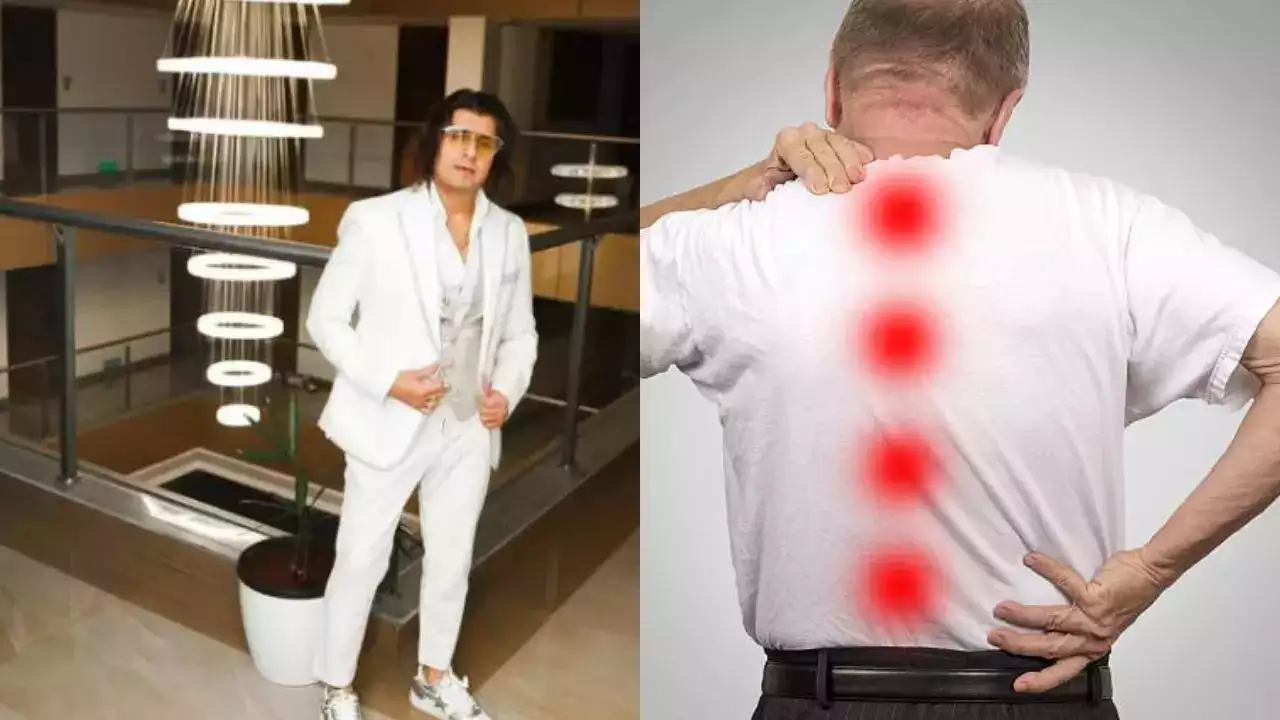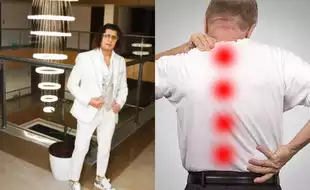
A back spasm happens when muscles begin to painfully twinge, seize, or contract
Ahead of his concert performance in Pune recently, singer Sonu Nigam suffered an excruciating back pain, which he said was due to a spasm. Despite the “excruciating” pain, Sonu practiced for the performance his riyaz as a reflexology practitioner worked on his feet, as shown in a video he shared on social media.
The singer had stepped also down from the stage while his team helped him as he tried to fix his pain by stretching.
What is a back spasm?
A back spasm happens when muscles begin to painfully twinge, seize, or contract. The muscles in your upper, middle, and lower back are divided into three types: intrinsic or deep muscles, superficial muscles, and intermediate muscles.
According to doctors, while lower back spasms are more common, any muscle can contract. Experts say around 80 per cent of people across the world have had or will have some sort of back pain in their lives. Back spasms and other back pain are, unfortunately, very common.
Back spasms start with no warning, or they may begin as a mild twitch that builds to agonising pain. While most athletes or those who do heavy lifting get spasms, doctors say anyone with other types of back pain is more likely to experience back spasms.
What causes back spasms?
Doctors say there are a number of possible causes for back spasms, a few of which include:
Not moving enough
If you sit too much, have poor posture, and do not exercise regularly using your back or stomach muscles, they tend to become weak and get spasms.
Using your muscles too much
Those who are into sports or heavy into gymming may also experience back spasms because of muscle strain—a tear that leads to inflammation.
Dietary issues
According to experts, back spasms are also caused due to dehydration, or deficiency of, potassium or calcium in your diet.
Mental health issues
Anxiety and stress tense up your muscles, causing spasms
Sometimes, your back spasms may mean that you have a serious condition, which includes gallstones, stiff person’s syndrome, ankylosing spondylitis, kidney stones, infections, tumour, arthritis, and herniated discs.
Signs and symptoms of back spasms
Experts say a back spasm can feel either like a dull ache or twitch, or it can get intensely sharp and painful which is debilitating. If you experience any of the following symptoms in addition to back spasms, you should see your doctor immediately:
- Loss of bladder or bowel control
- Muscle weakness in arms or legs
- Odd sensations, numbness, or weakness on one side of your body
- Loss of balance and coordination
- Loss of a sense of feeling in your limbs
Ways to treat back spasms
Doctors usually prescribe bed rest for those who deal with back spasms. However, a few other ways you can treat the condition include:
Ice or heat therapy
You can apply ice or heat to the location of your back spasms by wrapping the ice pack or heating pad in a towel or pillowcase and applying it to the affected area for 20-30 minutes.
Pain medications
A few over-the-counter pain medications can help
Muscle relaxants
Your doctor may also recommend taking a muscle relaxant for instant relief
Physical therapy
Physical therapy is usually prescribed to help you relax and do proper stretches for your back muscles.
Get Latest News Live on Times Now along with Breaking News and Top Headlines from Health and around the world.

